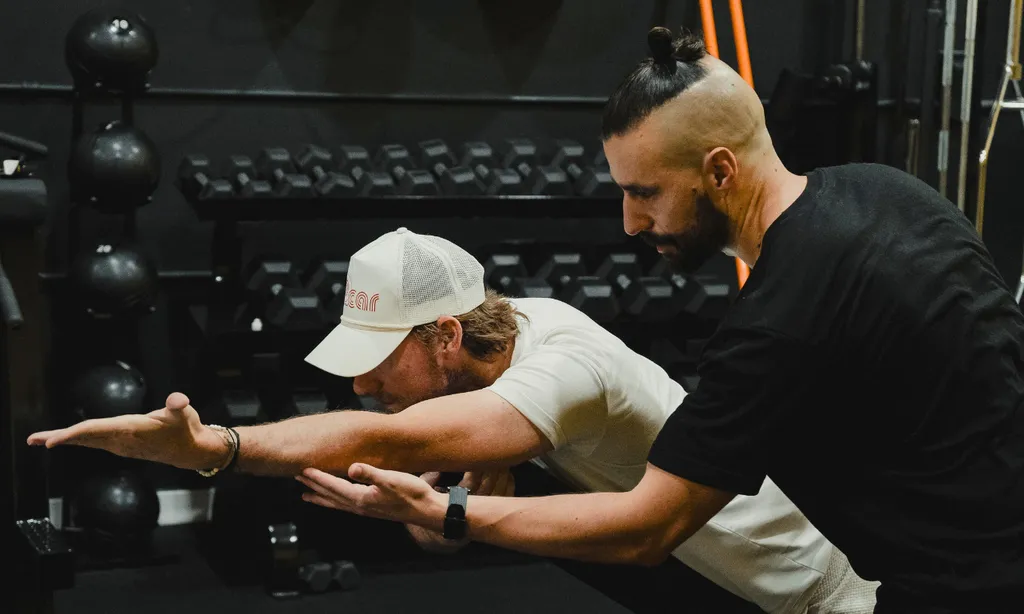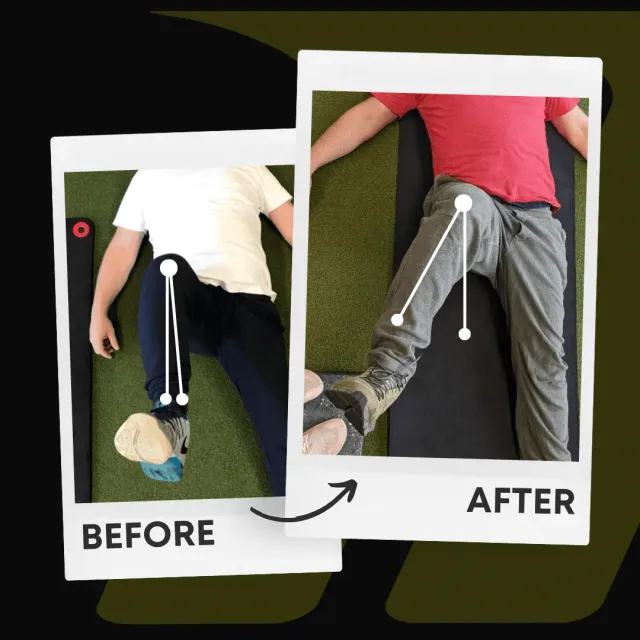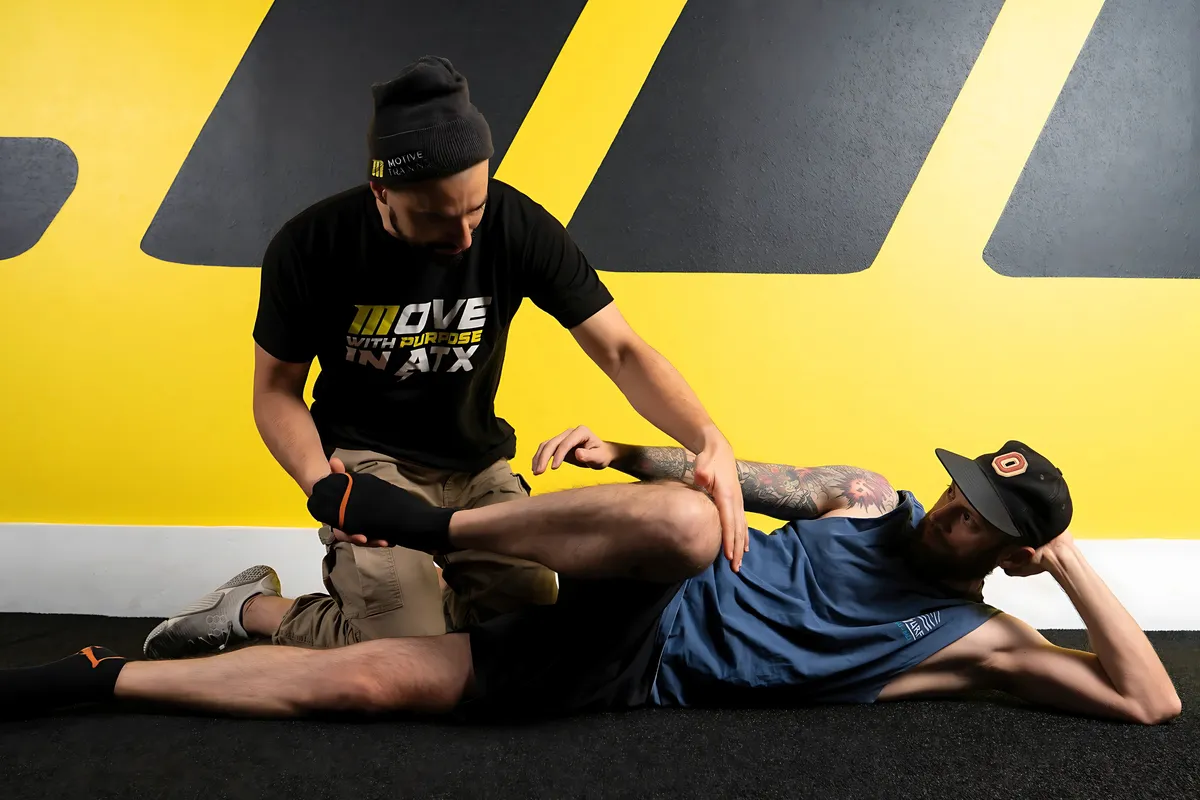Mobility Training: It's Essential. Period.
January 1, 2025 | Functional Range Conditioning

What Is Mobility Training?
Mobility training is an exercise that enhances one’s ability to control one’s body through the full range of motion available at each joint. Unlike static stretching or isolated stability exercises, mobility training combines elements of flexibility, strength, and control to improve joint movement and function.
You can temporarily improve the range of motion through mobility exercises, increase blood flow to the muscle groups surrounding the targeted joints, and enhance neuromuscular control. These benefits are not just for athletes or fitness enthusiasts but foundational for anyone who values a healthy and pain-free lifestyle.
While mobility training shares common ground with flexibility and stability training, it is distinct. Flexibility refers to the passive range of motion at a joint, while stability involves the ability to maintain control in a position or movement. Mobility, on the other hand, bridges these concepts, integrating flexibility and stability into dynamic, functional movements, making it a unique and essential component of fitness.
Incorporating mobility work into fitness education and exercise programs is essential for personal trainers. Mobility training helps individuals with hip, knee, or other joint pain and lays the groundwork for sustainable and pain-free movement patterns in daily life and athletic performance.
Benefits Of Mobility Training
Mobility training offers a host of benefits that extend beyond improving range of motion. Some key advantages include:
-
Improved Flexibility: Mobility training actively works on flexibility by moving through dynamic stretches and positions that expand the functional range of your joints.
-
Pain Alleviation: Mobility exercises can reduce chronic pain associated with stiffness, poor posture, or overuse by improving movement patterns and addressing muscle imbalances.
-
Enhanced Range of Motion: Increased joint range can lead to better performance in physical activities and reduce the likelihood of injuries.
-
Reduced Stiffness: Regular mobility work helps combat stiffness caused by sedentary lifestyles or repetitive movements.
-
Boosted Overall Fitness: Better mobility enhances functional fitness, allowing you to efficiently perform everyday tasks and complex exercises.
These benefits make mobility training particularly useful for individuals with chronic pain or mobility issues. Additionally, those seeking improved exercise adherence and long-term health outcomes find that mobility work supports their goals by reducing discomfort and making movement enjoyable. For personal trainers, mobility training is a valuable tool to optimize client programs and outcomes.
Who Can Benefit from Mobility Training?
Mobility training is inclusive and universally beneficial. Whether you’re a beginner or a seasoned athlete, mobility work can elevate your physical health and performance. Here’s how various groups can benefit:
-
General Population: Mobility training aids individuals of all ages to maintain joint health and reduce stiffness.
-
People With Joint Pain: Those experiencing hip, knee, shoulder, or back pain often see improvements in discomfort and function.
-
AthletesAnd Fitness Enthusiasts: Enhanced mobility supports better performance, reduced injury risk, and recovery.
-
Aging Adults: Mobility work mitigates age-related declines in joint function, keeping movement pain-free and efficient.
-
Personal Trainers: Trainers can improve their own fitness while developing more effective programs for clients.
By addressing mobility, you gain a foundation for strength, endurance, and overall well-being, making it an essential aspect of fitness for everyone.
Essential Mobility Exercises
One cornerstone of mobility training is Controlled Articular Rotations (CARs). CARs involve slow, deliberate movements of a joint through its full range of motion to maintain and expand mobility while improving joint health. For example:
-
Shoulder CARs: Move your arm in a large circular motion while maintaining tension throughout the range. This exercise improves shoulder health and function.
-
Hip CARs: Slowly rotate your leg at the hip joint, keeping your pelvis stable. This helps with hip mobility and reduces stiffness.
-
Spinal CARs: Focus on segmental control by slowly flexing, extending, and rotating the spine to improve back mobility.
Incorporating these exercises into your routine ensures each joint gets the attention it needs to move effectively and stay healthy.
Read More About CARs, here.
Personal Training For Mobility
Personal trainers play a pivotal role in bringing mobility training to a broader audience. By incorporating mobility-focused exercises into client programs, trainers can:
-
Improve Client Outcomes: Alleviate pain, enhance flexibility, and address movement restrictions.
-
Enhance Their Own Fitness: Trainers who practice mobility training improve their ability to demonstrate and coach movements effectively.
-
Develop Customized Programs: Certified trainers can assess client needs and create personalized mobility plans to target specific issues, such as hip pain or reduced shoulder range.
By integrating mobility work into fitness education, trainers provide clients with a well-rounded approach that promotes long-term health and movement quality.
Common Mistakes To Avoid In Mobility Training
Like any fitness practice, mobility training has pitfalls to avoid. Being aware of these common mistakes can empower you to make informed decisions and avoid potential injuries:
-
Skipping Warm-Ups: Not warming up before mobility exercises can reduce effectiveness and increase injury risk. Spend 5-10 minutes on light aerobic activity or dynamic stretching to prepare your body.
-
Ignoring Pain Signals: Mobility work should never cause pain. If an exercise feels uncomfortable, modify it or consult a professional.
-
Neglecting Consistency: Sporadic mobility sessions won’t yield long-term benefits. Commit to a regular schedule to see sustained improvements.
-
Going Without Guidance: Beginners often benefit from working with a certified trainer to ensure they use proper techniques and select appropriate exercises.
Avoiding these mistakes helps ensure your mobility training is safe and effective.
Tracking Progress And Staying Motivated
Like any fitness regimen, mobility training requires commitment and progress tracking to remain effective. Here’s how you can stay on track:
-
Assess Progress: Regularly measure your range of motion and note improvements in joint function. Tools like goniometers or simple movement tests can be helpful.
-
Set Clear Goals: If you want to touch your toes, alleviate shoulder pain, or improve hip flexibility, having specific objectives keeps you focused.
-
Monitor Daily Movements: Pay attention to how mobility training affects your posture, exercise form, and daily activities.
-
Stay Accountable: Partner with a friend or trainer to keep your motivation high. Sharing progress and challenges can make the journey more enjoyable.
Consistency and accountability ensure mobility work becomes a sustainable part of your fitness routine.
The Importance of Mobility As We Age
As we age, our bodies undergo inevitable changes. Joints may lose lubrication, cartilage may thin, and tendons may become less elastic. These changes can lead to stiffness, reduced range of motion, and pain. However, consistent mobility training is a powerful tool to combat these effects, promoting joint health and longevity.
As you age, mobility training becomes increasingly important to:
-
Preserve Independence: Functional mobility allows older adults to perform daily tasks without assistance.
-
Reduce Pain: Exercises targeting stiff or achy joints can alleviate discomfort and improve quality of life.
-
Maintain Fitness: Mobility work supports other fitness activities, ensuring aging adults can stay active and healthy.
Incorporating mobility exercises into your routine early in life can prevent or mitigate many age-related movement challenges. For older adults, even starting small can make a significant difference over time.
Conclusion
Mobility training is a cornerstone of overall health and fitness. By improving range of motion, reducing stiffness, and alleviating pain, it enhances not only how we move but how we live. If you’re an athlete, a personal trainer, or someone simply looking to move better and feel great, mobility work offers transformative benefits.
Make mobility a priority in your routine. Start with foundational exercises like Controlled Articular Rotations, avoid common mistakes, and stay consistent in tracking your progress. As you age, prioritize mobility to maintain independence and reduce pain. You’re investing in a healthier, more functional future by embracing mobility training.
Written by

Motive Training Staff
We’ll teach you how to move with purpose so you can lead a healthy, strong, and pain-free life. Our headquarters are in Austin, TX, but you can work with us online by signing up for KINSTRETCH Online or digging deep into one of our Motive Mobility Blueprints.

